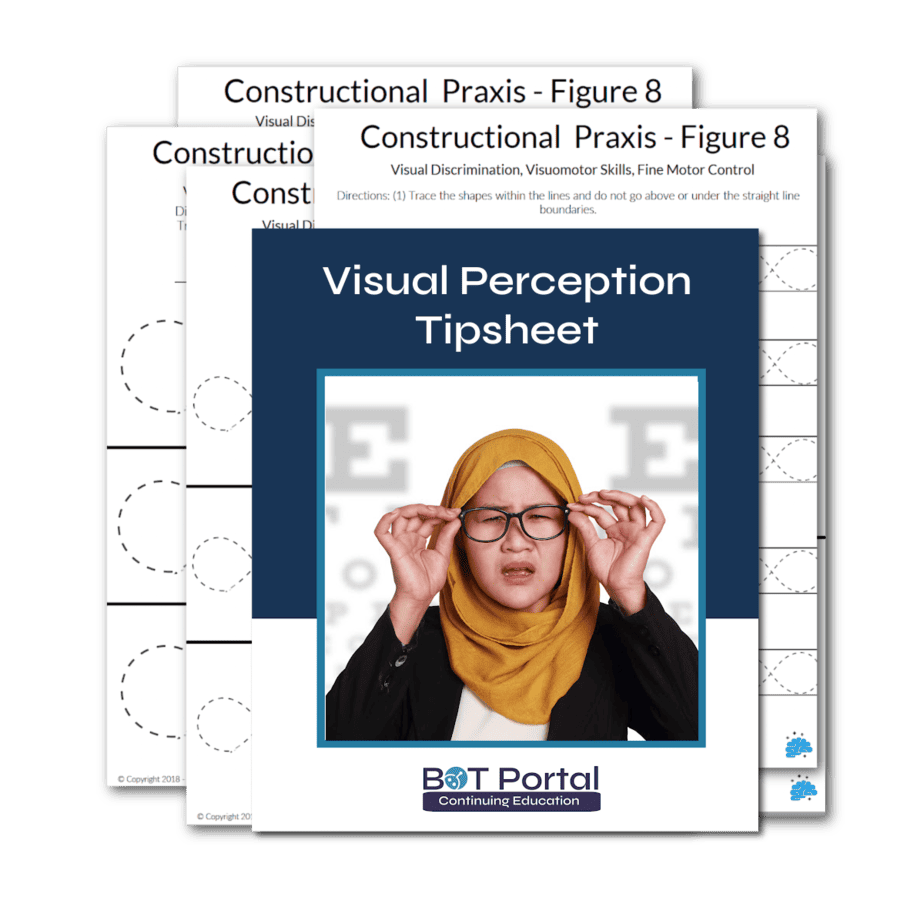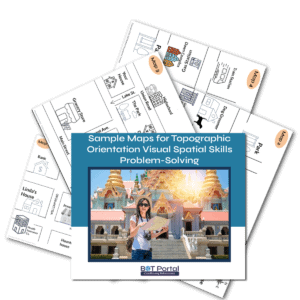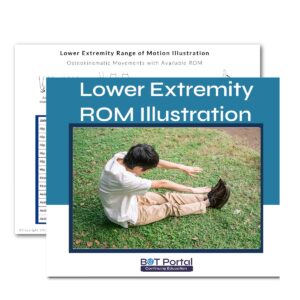Description
Figure 8 Series – Constructional Praxis
The Figure 8 series worksheets focusing on constructional praxis are invaluable resources in occupational therapy, particularly for individuals aiming to enhance their spatial perception and fine motor skills. Constructional praxis refers to the ability to organize and manipulate visual-spatial elements to construct meaningful patterns or structures, a vital skill for tasks like drawing, handwriting, and assembling objects.
These worksheets typically feature a series of Figure 8 shapes in varying sizes and orientations, challenging individuals to trace or replicate the shapes with precision. By engaging in activities that involve tracing Figure 8 shapes, clients work on spatial organization, hand-eye coordination, and motor planning—key components of constructional praxis.
But what specific brain regions are we targeting through these activities? Constructional praxis relies on the coordinated functioning of several brain regions, including the parietal lobe, occipital lobe, and frontal lobe. The parietal lobe plays a central role in spatial processing and visuospatial awareness, helping individuals interpret and manipulate visual information effectively.
The occipital lobe, situated at the back of the brain, is responsible for processing visual stimuli received from the eyes. It plays a crucial role in recognizing shapes, sizes, and orientations, providing the foundation for accurate spatial perception.
Furthermore, the frontal lobe contributes to motor planning and execution, enabling individuals to coordinate hand movements and manipulate objects with precision. By engaging in activities that involve tracing Figure 8 shapes, individuals activate these brain regions, promoting neural connections and facilitating the development of constructional praxis skills.
In occupational therapy, Figure 8 series worksheets serve as effective tools for targeting constructional praxis deficits. By providing structured opportunities for practice and feedback, therapists help clients refine their spatial perception and motor coordination, ultimately improving their ability to engage in tasks requiring constructional skills.
.Other Useful Links:
Check out BOT Portal: Resource Site for Occupational Therapy Students and Practitioners
Sample Maps for Topographic Orientation Visual Spatial Skills Problem-Solving




